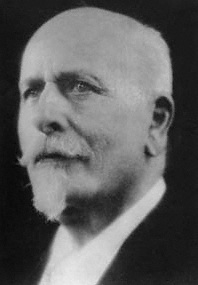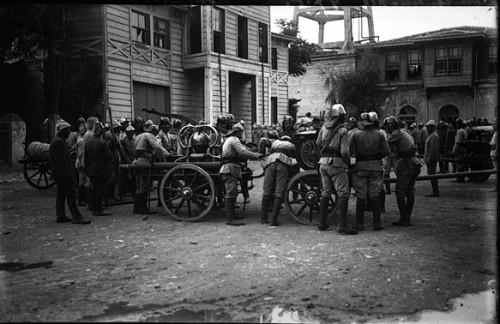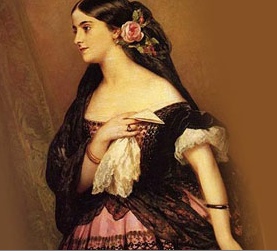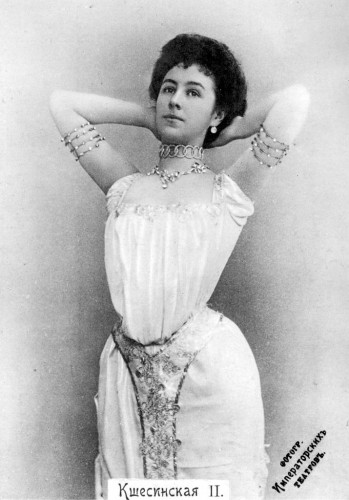The Mysterious Mr. Zedzed: The Wickedest Man in the World
Sir Basil Zaharoff was the archetypal “merchant of death”—an arms salesman who made a career out of selling to both sides in a conflict
/https://tf-cmsv2-smithsonianmag-media.s3.amazonaws.com/filer/Zedzedc1930.jpg)
Late in November 1927, an elderly Greek man sat in his mansion in Paris and tended a fire. Every time it flickered and threatened to die, he reached to one side and tossed another bundle of papers or a leather-bound book into the grate. For two days the old man fed the flames, at one point creating such a violent conflagration that his servants worried he would burn the whole house down. By the time he had finished, a vast pile of confidential papers, including 58 years’ worth of diaries that recorded every detail of a most scandalous career, had been turned to ash. Thus the shadowy figure whom the press dubbed “the Mystery Man of Europe” ensured that his long life would remain, for the most part, an impenetrable enigma.
Few men have acquired so scandalous a reputation as did Basil Zaharoff, alias Count Zacharoff, alias Prince Zacharias Basileus Zacharoff, known to his intimates as “Zedzed.” Born in Anatolia, then part of the Ottoman Empire, perhaps in 1849, Zaharoff was a brothel tout, bigamist and arsonist, a benefactor of great universities and an intimate of royalty who reached his peak of infamy as an international arms dealer—a “merchant of death,” as his many enemies preferred it.

Zacharias Basileus Zacharoff, better known as Sir Basil Zaharoff: arsonist, bigamist and pimp, arms dealer, honorary knight of the British Empire, confidant of kings, and all-round international man of mystery.
In his prime, Zaharoff was more than a match for the notorious Aleister Crowley in any contest to be dubbed the Wickedest Man in the World. Still remembered as the inventor of the Systeme Zaharoff—a morally bankrupt sales technique that involved a single unscrupulous arms dealer selling to both parties in a conflict he has helped to provoke—he made a fortune working as a super-salesman for Vickers, the greatest of all British private arms firms, whom he served for 30 years as “our General Representative abroad.” He expressed no objection to, and indeed seemed rather to enjoy, being referred to as “the Armaments King.”

Men of the Constantinople Fire Brigade, an Ottoman army unit well-known in the 19th century for its corruption. In the 1860s Zaharoff was employed there as an arsonist, setting fires that could be extinguished for profit.
Zaharoff’s youth remains shrouded in mystery and rumor, much of it put about by Zedzed himself. He was born in the Turkish town of Mughla, the son of a Greek importer of attar of roses, and soon proved to be an astonishing linguist—he would later be described as the master of 10 languages. At some point, it is supposed, the family moved briefly to Odessa, on Russia’s Black Sea coast, where they Russified their name. But remarkably little proper documentation survives from this or any other period of Zaharoff’s career. As one early biographer, the Austrian Robert Neumann, put it:
You ask for his birth certificate. Alas! a fire destroyed the church registers. You search for a document concerning him in the archives of the Vienna War Office. The folder is there, but it is empty; the document has vanished…. He buys a château in France and—how does the story of the editor of the Documents politiques go?—”Sir Basil Zaharoff at once buys up all the picture postcards… which show the château, and strictly prohibits any more photographs being taken.”
Most Zaharoff biographers have filled these gaps by indulging in colorful speculation, nearly all of which needs to be discarded. What can be said is that among the allegations that survived investigation to make their way into Britain’s august Dictionary of National Biography are the suggestion that Zedzed began his career touting for business for a Turkish brothel, and the statement that he subsequently established himself as a professional arsonist working for the Constantinople Fire Brigade, which ran a profitable sideline in burning down the mansions of the wealthy in order to extort rewards from their owners for saving the valuables within.

Italian-American singer Adelina Patti, the greatest soprano of her day, was charmed into endorsing Zaharoff's sleeping cars during visits to St. Louis in the 1880s. Retiring to South Wales, she married her Swedish masseur and spent 40 years converting her home there into a Gothic castle. Listening to a recording of her own singing for the first time, the diva exclaimed: "Ah! My God! Now I understand why I am Patti! Yes, what a voice!"
Beyond this, little is known. Books published since the late 1920s accuse Zaharoff of more or less every crime in the book, up to and including starting the First World War for his personal profit. Subjected in October 1874 to stiff cross-examination in an English court, Zedzed claimed simultaneously to have been educated at Rugby—the great British public school that was the setting for Tom Brown’s Schooldays—and to have habitually carried a revolver since he was 7 years old. Later, he was accused of selling death-trap submarines to Greece at a time when he was demonstrably romancing heiresses in the United States. The writer Osbert Sitwell,who left one of the most perceptive descriptions of Zaharoff, found him “both evil and imposing,” and described
the beaky face, the hooded eye, the wrinkled neck… the impression of physical power and the capacity to wait…. He was in outlook merely a super-croupier. And once… I heard him introducing himself to a millionaire friend of mine with the startling phrase: “I am Sir Basil Zaharoff: I have sixteen millions!”
What follows attempts to cut a path through this jungle of disinformation. It is based solely on what I have been able to glean over many years from official records, contemporary newspapers and sober, referenced histories. It remains sensational enough.
We can be reasonably certain that, at some point in his late teens, the young Zaharoff quit Turkey for western Europe. In his later days he spoke vaguely of obtaining a “general education in London and Paris,” and the leading historian of Vickers remarks that “one can only guess at its catholicity.” By the early 1870s, Zaharoff was in Britain, where in 1872 he married one Emily Burrows, the daughter of a Bristol builder. Very shortly afterward, the groom was arrested in Belgium on charges of embezzling £7,000 in merchandise and securities. He became the unwilling first subject of a newly signed extradition treaty between Belgium and Britain and a trial at the Old Bailey. Thanks to a prompt offer of compensation, Zedzed was merely “bound over” (set free on a promise of good behavior) for the embezzlement of “28 cases of gum and 109 bags of gall.”
From there Zaharoff went to Cyprus, still under Turkish rule, where—the DNB recounts—”using sundry aliases he set up as a storekeeper and boldly unscrupulous contractor.” According to Stephanos Skouloudis, who became Greek prime minister in 1915, it was during these years that Zaharoff was first hired as an arms salesman, becoming Balkan representative for a small Swedish firm run by the inventor Thorsten Nordenfelt. True or not, Zaharoff slipped back into Britain after Cyprus passed to English control after 1878. By 1883, he seems to have been established at Galway in Ireland, where he posed as a count, worked as a shipping agent, and was sent death threats for persuading local girls to emigrate in search of factory work in Massachusetts.
Given 24 hours to leave the country by his angry hosts, Zaharoff fled to the United States himself, where he built a career in railroads. It appears that he was the “Count Zacharoff” who in Utah in 1884 claimed to be in possession of “four black diamonds that played a celebrated part in the Turko-Russian War” and who a year later caused a small scandal in Missouri by associating with the notorious madam Pearl Clifford, “one of the most beautiful soiled doves ever known in St. Louis,” while working as superintendent of a local railway sleeping-car company. He was certainly the Count Zacharoff who—hastily promoting himself to the eminence of “Prince Zacharias Basileus Zacharoff”—married the New York heiress Jeannie Billings for her $150,000 and her expectations later in 1885, and found himself the subject of a transatlantic police hunt when an expatriate Bristol businessman denounced him as a bigamist.
The Omaha Daily Bee gives a good summary of Zaharoff’s methods in this period:
He maintained a high social position by means of letters from prominent society people which purported to be genuine, and had a library full of documents which he claimed were written to him by European dignitaries. He claimed to be a nephew of Prince Gortschakoff…and told a remarkable story of his banishment by the czar. At one time he created a considerable commotion among the set here in which he moved by threatening to go abroad and fight a duel with a Prussian prince who had dared to insult his mother.

In an early example of the Systeme Zaharoff, Nordenfelt succeeded in selling one of his primitive, steam-driven submarines to Greece, then two to the Greeks' archrivals, the Turks, and finally a more modern boat to the worried Russians. Zedzed was intimately involved in at least two of the deals; pictured here is the Ottoman submarine Abdul Hamid, on the surface at Constantinople in 1887.
Relocating yet again in the wake of the Billings scandal, Zedzed returned to Greece and the Ottoman Empire, and during the later 1880s he certainly was involved in touting Nordenfelt’s two principal inventions: a multi-barreled machine gun and a steam-powered submarine.
Nordenfelt submarines were expensive and entirely useless—dangerously unstable underwater, and so hot when closed up that the crews tended to faint; it is to Zaharoff’s credit that the firm somehow sold six of them. The machine gun, on the other hand, was a viable weapon, though less modern and less efficient than its great rival, the automatic, single-barreled Maxim gun. The unscrupulous Zedzed overcame these obstacles, too, intriguing in Italy and Austria against his superior competitor.
The story of how Zaharoff met the American-born Sir Hiram Maxim and eventually insinuated himself into the service of the Vickers company was told by none other than H.G. Wells:
Maxim exhibited his gun at Vienna. When he fired his gun at a target and demonstrated its powers, Zaharoff was busy explaining to expert observers that the whole thing was an exhibition of skill; that only Maxim could fire the gun; it would take years to train men to use it; that these new machines were delicate and difficult to make and could not be produced in quantities, and so forth.
Maxim, after tracing the initials of the Emperor upon a target, prepared to receive orders. They were not forthcoming. He learnt that the Nordenfelt was simple and strong. This gun of his was a ‘scientific instrument’ unfit for soldierly hands. His demonstration went for nothing.
What had happened? He realised he was vis-á-vis with a salesman, a very formidable salesman. In the end he amalgamated with the salesman.
It was only then, Wells added—when Nordenfelt and Maxim had combined to form the Maxim-Nordenfelt Company (a group absorbed in turn into what became the firm of Vickers, Sons & Maxim after 1897)—that these difficulties abruptly vanished, and the new company was rewarded with a large order for Maxim guns.
Despite the destruction of his diaries (which were reputed to tell everything, and for which a French newspaper once offered $5,000 for a single page), it is possible to catch further glimpses of Zaharoff during his long career as a merchant of death; he appears sporadically in the Vickers papers, now at Cambridge University Library, and increasingly in the British Foreign Office archives. These sources allow us to trace Zedzed’s increasing wealth and status. Between 1902 and 1905 he was paid £195,000 in commissions—worth $25 million today—and by 1914 he was active not only in Istanbul and Athens but in St. Petersburg, Buenos Airies and Asunción; he owned several banks, lived in a French château and was romancing the Duchess of Villafranca, a Spanish noblewoman who would become his third wife.

The great prima ballerina assoluta Mathilde Kschessinska was used by Zaharoff to help win business against considerable odds in Czarist Russia.
There are, not surprisingly, difficulties in ascertaining what exactly Zaharoff did to obtain the rich commissions as an arms salesman that funded such extravagance, but the documentary evidence that survives suggests that his chief value to his employers was an instinctive understanding of when and to whom he should offer bribes—he wrote gleeful memos that told of “doing the needful” and “administering doses of Vickers.” Foreign Office records show that in 1912 Zaharoff was instrumental in passing 100,000 rubles to officers in Russia’s Ministry of Marine in order to divert government contracts to a local shipbuilding group in which Vickers had an interest.
At much the same time, for reasons that remain obscure but can easily be guessed at, Vickers also won a contract to supply light machine guns to the Russian army, despite the fact that its bid was almost 50 percent higher than one submitted by a local arms works. There is reason to suppose that in the latter case Zaharoff’s charm and easy way with women was at least as helpful as his money; the historian William Fuller suggests that he “made particularly effective use of his association with the ballerina Kshinskaia , who after losing her place as mistress , took up with Grand Duke Sergei Mikhailovich, inspector general of the Russian artillery.” In this, Zaharoff was merely repeating methods that had brought him success before; while living in St. Louis, he had charmed the opera diva Adelina Patti into endorsing his railroad sleeping cars.

British Prime Minister David Lloyd George, the "Welsh wizard," approved a knighthood for Zaharoff's secret service work during the First World War.
Many of Zaharoff’s claims of wealth and influence were dismissed as mere boasts during his lifetime (“There is an oriental flavour in the most trivial commonplaces of his life” sneered the Nottingham Evening Post). Nonetheless, he plainly moved in the highest circles. By the early 1920s he was a part-owner of the celebrated resort of Monte Carlo, and the diaries of Lord Bertie and the Earl of Derby, successive British ambassadors to France, are full of references to Zedzed. Bertie’s entries for June 1917 contain one passage that has often been used to portray him as a profit-gouging merchant of death—”Zaharoff,” the ambassador wrote, “is all for continuing the war jusqu’au bout .” Derby’s entries record high-level contacts: “Zaharoff came to see me today,” he wrote to a former Prime Minister, Lord Balfour, in August 1918, “and told me of conversations he had had with you, the King and Lloyd George.” According to this testimony, Zedzed was a trusted go-between, ferrying messages from George V to both Lloyd George and the French Prime Minister, Clemenceau. “I should think,” Derby added, “there is no man living in whom more people confide than him.”
Recently declassified papers dating to 1917 prove that the British government was willing to take a chance on Zaharoff during the crisis of the First World War. In 1916-17, he actively involved himself in clandestine negotiations to drag Greece into the war on the Allied side, and to persuade the Ottoman Empire to defect from the Germans. The highlight of this obscure episode came when, equipped with authorization from Lloyd George and £10 million in gold, the by then 68-year-old arms dealer traveled to Switzerland in a bid to buy Turkey out of the war—and, not incidentally, establish what would become the state of Israel.
Unfortunately for Zaharoff, his reputation preceded him; intercepted at the border, he was humiliatingly strip-searched and left standing in sub-zero temperatures for more than an hour by the border police. In the end, his intrigues came to nothing, but that did not stop him writing to the British government to demand “chocolate for Zedzed,” his coy reference to the major honor he craved. To the loudly expressed disgust of George V, who had come to loathe him, Lloyd George grudgingly recommended a Knight Grand Cross, enabling Zaharoff to style himself “Sir Basil” (against protocol, since he was by this time a French citizen) for the remainder of his life.
There remains the matter of the Zaharoff fortune, estimated on his death bed by “fiscal experts” to have amounted to $1.2 billion from the Great War alone. Zedzed often claimed to have given vast sums away—he endowed chairs at the University of Oxford and in Paris, was reputed to have personally funded Greece’s war with Turkey over Smyrna, and was still, the American press excitedly reported, “believed to be the wealthiest man in all Europe.” Yet, after his death, the cash seemed to melt away, vanishing just as surely as the further “tons of documents” that servants hastily burned at his château. Zaharoff’s will was proved at just £193,103, rather less than $1 million at the time, leaving us to wonder: Was his money hidden? Was it spent? Or were all those reports of a billion-dollar fortune merely the last of the great myths that Zedzed happily allowed to circulate?
Sources
‘Basil Zaharoff is gravely ill at Monte Carlo,’ Palm Beach Daily News, February 25, 1936; Fenner Brockway, The Bloody Traffic. London: Victor Gollancz, 1933; Richard Davenport-Hines, Zaharoff, Basil,” in Oxford Dictionary of National Biography. Oxford: OUP, 2004; Richard Dove, ‘Ein experte der uberlebens: Robert Neumann in British exile 1933-45,’ in Ian Wallace (ed), Aliens – Uneingebürgerte: German and Austrian Writers in Exile. Amsterdam: Rodopi, 1994; David Dutton (ed). Paris 1918: the War Diary of the 17th Earl of Derby. Liverpool: LUP, 2001; William C. Fuller. The Foe Within: Fantasies of Treason and the End of Imperial Russia. New York: Cornell University Press, 2006; Keith Hamilton, ‘Chocolate for Zedzed: Basil Zaharoff and the secret diplomacy of the Great War,’ in The Records of the Permanent Under-Secretary’s Department: Liaison Between the Foreign Office and British Secret Intelligence, 1873-1939. London: Foreign and Commonwealth Office, 2005; “Gerster and Patti,” Salt Lake Herald, March 6, 1884; “Married a meteoric fraud,” Omaha Daily Bee, October 5, 1885; Hiram Maxim. My Life. New York: McBride, Nast, 1915; William Scanlan Murphy. Father of the Submarine: The Life of the Reverend George Garrett Pasha. London: William Kimber, 1988; National Police Gazette, 17 October 1885; Robert Neumann. Zaharoff: the Armaments King. London: George Allen & Unwin, 1938; Nottingham Evening Post, 19 October 1921; George Riddle, Lord Riddle’s War Diary, 1914-1918. London: Nicholson and Watson, 1933; Jonathan Schneer. The Balfour Declaration: The Origins of the Arab-Israeli Conflict. London: Bloomsbury, 2010; ‘Servants burn documents, shroud Zaharoff mystery,’ Pittsburgh Press, November 27, 1936; ‘Sir Basil’s diary,’ Time, 5 December 1927; St Paul Daily Globe, May 30, 1883; May 17 and October 5, 1885; ‘The local romance,’ Bristol Mercury. 24 September 1885; Clive Trebilcock. ‘Legends of the British armaments industry 1890-1914: a revision,’ in Journal of Contemporary History 5 (1970); Clive Trebilcock, The Vickers Brothers: Armaments and Enterprise 1854-1914. London: Europa, 1977; Union of Democratic Control. The Secret International: Armaments Firms at Work. London: UDC, 1932; H.G. Wells. The Work, Wealth and Happiness of Mankind. London: William Heinemann, 1932.
/https://tf-cmsv2-smithsonianmag-media.s3.amazonaws.com/accounts/headshot/mike-dash-240.jpg)


/https://tf-cmsv2-smithsonianmag-media.s3.amazonaws.com/accounts/headshot/mike-dash-240.jpg)